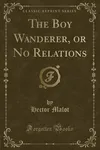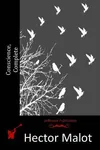Picture a French storyteller who spun tales of orphans and wanderers that still tug at heartstrings—meet Hector Malot! Born in 1830, this prolific 19th-century author penned over seventy books, but his masterpiece, Sans Famille (Nobody's Boy), remains a timeless gem in children's literature. With a knack for blending adventure and emotion, Malot brought the struggles and triumphs of society's outcasts to life.
The Making of Hector Malot
Hector-Henri Malot was born in La Bouille, a quaint village near Rouen, France, to Marie-Anne-Victoire and Jean-Baptiste Malot. His early years were steeped in the Normandy countryside, where he developed a lifelong love for nature and botany, often skipping French lessons to devour Racine and Molière. Initially studying law in Rouen and Paris, Malot rebelled against his father’s wishes in 1853, choosing literature over a legal career. He kicked off as a dramatic critic for Lloyd Francais and a literary critic for L’Opinion Nationale, sharpening his storytelling skills.
Hector Malot’s Unforgettable Stories
Malot’s literary career exploded with his 1859 debut, Les Amants, the first in his Victimes d’Amour trilogy, which captivated readers with its realist portrayal of love and society. His most famous work, Sans Famille (1878), follows Rémi, an orphan sold to a street musician named Vitalis, as he roams France and England, forging bonds and seeking his roots. Inspired by Italian street musicians, the novel’s vivid landscapes and heartfelt characters earned it the French Academy of Literature’s prestigious award. En Famille (1893), a companion novel, traces orphan Perrine’s quest for family, reflecting Malot’s knack for resilient young heroes. His lesser-known Romain Kalbris (1869) showcases a boy’s coastal adventures, while Le Mousse, published posthumously, continues his youth-focused tales. Malot’s realist style, akin to Balzac and Zola, painted a detailed picture of 19th-century France, from bustling Paris to rural hamlets, often championing the underdog.
His stories weren’t just for kids—though they became children’s classics, Malot wrote for all ages, weaving moral lessons with gripping narratives. His works, translated into numerous languages, were serialized in papers like Le Siècle, making them accessible to a broad audience. Malot’s ability to craft relatable, determined characters ensured his tales resonated across cultures.
Why Hector Malot Matters
Malot’s legacy lies in his empathetic portrayal of orphans and societal outcasts, shedding light on the plight of 19th-century children. Sans Famille has been adapted into films, TV series, and even a 2018 French movie, proving its enduring appeal. His advocacy for social issues—like child labor, divorce rights, and mental health reform—made him a progressive voice in his era. By celebrating resilience and kindness, Malot’s stories continue to inspire readers worldwide, reminding us of the power of human connection.
- Born: May 20, 1830, La Bouille, France
- Died: July 18, 1907, Fontenay-sous-Bois
- Key Works: Sans Famille, En Famille, Romain Kalbris
- Award: French Academy of Literature Prize for Sans Famille
Snag Sans Famille and dive into Hector Malot’s heartwarming world of adventure and hope!













